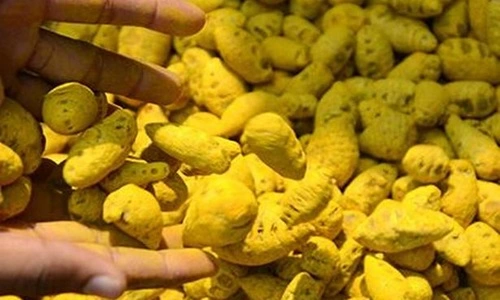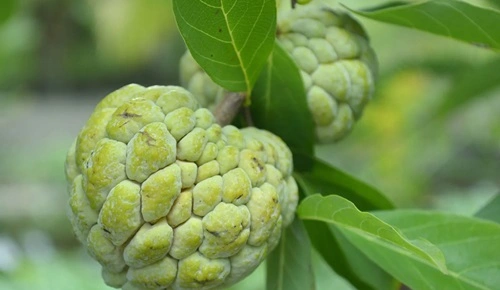Turmeric popularly known as “Haldi” in India, is one of the most significant and widely grown spices in the country. Revered for its culinary, medicinal, and cultural importance, turmeric holds a special place in Indian households. It is used in cooking, Ayurvedic medicine, religious rituals, and cosmetic applications. India is the largest producer and exporter of turmeric globally, with major cultivation happening in Telangana, Andhra Pradesh, Maharashtra, Tamil Nadu, Odisha, Karnataka, and Kerala.
Different turmeric varieties are cultivated across India, each varying in curcumin content, yield, rhizome size, and color. Curcumin, the principal bioactive compound, determines the medicinal and commercial value of turmeric.
This article highlights the top turmeric varieties grown in India, along with their characteristics, regions of cultivation, and uses.

1. Lakadong
Lakadong turmeric is considered one of the best turmeric varieties in India due to its high curcumin content and excellent quality.
- Curcumin Content: 6–8% (very high)
- Rhizome Color: Bright yellow
- Regions: Meghalaya (Jaintia Hills)
- Characteristics:
- High medicinal value due to high curcumin content
- Strong aroma and vibrant color
- Uses: Medicinal applications, health supplements, culinary purposes
2. Rajapuri
Rajapuri is a widely grown turmeric variety in Maharashtra and is known for its large rhizomes and good yield.
- Curcumin Content: 2.5–3%
- Rhizome Color: Deep yellow
- Regions: Maharashtra (Sangli and Satara districts)
- Characteristics:
- Large rhizomes with high yield potential
- Popular for commercial cultivation
- Uses: Culinary use, powder production, export
3. Erode (Bulgur)
Erode turmeric, also known as Erode Bulgur, has Geographical Indication (GI) status and is prized for its bright yellow color and quality.
- Curcumin Content: 2–4%
- Rhizome Color: Bright yellow
- Regions: Tamil Nadu (Erode region)
- Characteristics:
- High demand in domestic and international markets
- Uniform rhizome size and color
- Uses: Powder production, culinary purposes
4. Salem
Salem turmeric is a premium variety cultivated in Tamil Nadu, known for its high yield and medium curcumin content.
- Curcumin Content: 3–4%
- Rhizome Color: Deep yellow to orange
- Regions: Tamil Nadu (Salem region)
- Characteristics:
- High productivity and good market demand
- Suitable for processing into turmeric powder
- Uses: Spice industry, powder production
5. Alleppey Finger
Alleppey Finger turmeric, grown in Kerala, is renowned for its deep orange color and high essential oil content.
- Curcumin Content: 4–5%
- Rhizome Color: Deep orange
- Regions: Kerala (Alleppey)
- Characteristics:
- High essential oil content (5–6%)
- Preferred for medicinal purposes and exports
- Uses: Medicinal applications, coloring agent, culinary use
6. Sangli Turmeric
Sangli turmeric is one of the most commercially grown varieties in Maharashtra and is known for its high yield and market value.
- Curcumin Content: 2.5–3%
- Rhizome Color: Bright yellow
- Regions: Maharashtra (Sangli region)
- Characteristics:
- Consistent quality and yield
- Ideal for turmeric powder production
- Uses: Spice markets, processing industries
7. Suvarna
Suvarna is a high-yielding turmeric variety widely grown in Karnataka and Andhra Pradesh. It is preferred for its disease resistance and uniform rhizomes.
- Curcumin Content: 4–5%
- Rhizome Color: Yellow-orange
- Regions: Karnataka, Andhra Pradesh
- Characteristics:
- Resistant to major pests and diseases
- High yield with uniform growth
- Uses: Culinary purposes, powder production
8. BSR-2
BSR-2 is an improved variety developed for its high yield and better curcumin content. It is cultivated in Tamil Nadu and parts of South India.
- Curcumin Content: 4%
- Rhizome Color: Yellow
- Regions: Tamil Nadu, Karnataka
- Characteristics:
- High yield and consistent quality
- Tolerant to leaf spot and rhizome rot
- Uses: Fresh and dried rhizomes, powder production
9. Pratibha
Pratibha is a hybrid turmeric variety with high curcumin content and excellent adaptability to diverse climatic conditions.
- Curcumin Content: 5–6%
- Rhizome Color: Bright yellow-orange
- Regions: Maharashtra, Andhra Pradesh, Karnataka
- Characteristics:
- High yield potential and good disease resistance
- Preferred for commercial cultivation
- Uses: Medicinal uses, culinary purposes
10. Suguna
Suguna is a high-yielding turmeric variety known for its good color quality and resistance to common diseases.
- Curcumin Content: 4–5%
- Rhizome Color: Yellow
- Regions: Tamil Nadu, Karnataka
- Characteristics:
- Excellent yield with consistent quality
- Resistant to leaf spot disease
- Uses: Powder production, food industry
FAQs
Q1: Which turmeric variety has the highest curcumin content?
A: Lakadong turmeric from Meghalaya has the highest curcumin content, ranging from 6–8%.
Q2: Which turmeric variety is best for powder production?
A: Erode, Rajapuri, and Salem varieties are ideal for powder production due to their high yield and vibrant color.
Q3: Which states are the largest producers of turmeric in India?
A: Major turmeric-producing states include Telangana, Andhra Pradesh, Maharashtra, Tamil Nadu, Karnataka, and Kerala.
Q4: What is the significance of Alleppey Finger turmeric?
A: Alleppey Finger turmeric is valued for its deep orange color and high essential oil content, making it suitable for medicinal and cosmetic applications.
Q5: Why is curcumin important in turmeric?
A: Curcumin is the bioactive compound responsible for turmeric’s anti-inflammatory, antioxidant, and medicinal properties, determining its quality and market value.
India’s diverse agro-climatic zones enable the cultivation of a wide range of turmeric varieties, each suited for specific uses and markets. From the high-curcumin Lakadong to the commercially viable Rajapuri and Salem varieties, turmeric farming plays a crucial role in India’s agricultural economy. With growing global demand for health products and natural remedies, turmeric continues to be a profitable crop for Indian farmers

